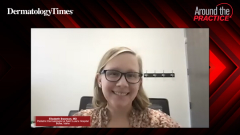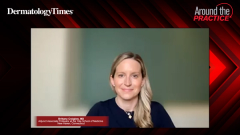
Case 1 Continued: Clinical Impressions
Expert pediatric dermatologists Drs Elizabeth Swanson, Joshua Zeichner, and Raj Chovatiya share impressions from patient case No. 1.
Episodes in this series

Joshua Zeichner, MD: Lisa and Raj, for this case, I’m going to have you give us your opinions. First, based on this patient’s age and the location of the rash, what treatment options are available?
Elizabeth Swanson, MD: Thanks so much, Josh. For a 2-year-old, we have topical steroids, topical calcineurin inhibitors, and topical crisaborole, all approved for a 2-year-old. We also have dupilumab approved down to the age of 6 months. That’s an option on the table if we need it. However, this particular 2-year-old hasn’t tried anything by prescription yet, so I’d probably start pretty simply with a low- to mid-potency topical steroid and see how the child responds and then get fancier from there if we need to.
Raj Chovatiya, MD, PhD: I agree. That’s pretty similar to what I might do as well. This is a topically naive patient. The over-the-counter stuff they’ve used is probably fancy moisturizers, at best hydrocortisone 1%, which might as well just be lotion. If we can treat them with the easiest possible solution topically, that’s the way I’d go too.
Joshua Zeichner, MD: When we’re dealing with younger children and the parents of younger children, we’re always having to deal with perceptions of safety with the medications we’re prescribing, even the topicals. What’s your approach with patients?
Elizabeth Swanson, MD: I try to reassure them. Most of the time, we’re seeing patients’ parents who are a bit steroid-phobic. I try to reassure them that we prescribe topical steroids in a reasonable, appropriate, and responsible way, and that people get into trouble with prolonged or extensive use, or if they’re using one with a potency that is inappropriate for the age or location that it’s being used. In general, I try to reassure.
I also might make particular choices as to the steroid that I choose. I use a lot of fluocinolone oil, brand name Derma-Smoothe, especially in the younger children. It’s a low-potency topical steroid. The oil is doing a lot of the heavy lifting, and it’s applied at bedtime. A lot of people like the idea of an oil. For some reason, it seems more natural. I prescribe a lot of that to steroid-phobic families. I also do a lot of a compounded mix referred to as the Aron Regimen. It was created by a dermatologist in the United Kingdom decades ago. It’s a compounded mix of betamethasone valerate, mupirocin, and a moisturizer, either Vanicream if you want a cream base, or Plastibase if you want an ointment base. It’s very diluted. Of the 454 g in the 1-pound tub of product, only 30 g of it is the steroid. That’s appealing to steroid-phobic families. It’s safe and diluted, so that appeals to them.
Raj Chovatiya, MD, PhD: Whether it’s a child, an adolescent, or an adult, oftentimes it isn’t necessarily the choice of treatment that’s going to take us much time. It’s the discussion about what we want to do and why we’re doing it, then reviewing that every time we see them. There are a lot of ways to make sure that your patients are keeping up and you’re saving yourself and your staff time, including—I’m sure Lisa does this—coming up with a good action plan, talking about everything that you mentioned in that visit, explicitly spelled out. Because if you say, “I’m going to give you this and use it sometimes and not sometimes,” if anything, some of that feeds into the feelings of phobia, such as them questioning, “Am I using it too much? Am I using it too little? What should I be looking for?”
I like to have a lot of these things in a very prescriptive format. Then I customize it based on the visit. I find that parents will go home and read this stuff. With my adult patients, it’s largely going in the recycling bin or trash can the moment they step out of my office. But at least for the pediatric visits, I know that the parents are going to read it, so I like to make sure that everything we talked about plus more is in there.
Transcript edited for clarity
Newsletter
Like what you’re reading? Subscribe to Dermatology Times for weekly updates on therapies, innovations, and real-world practice tips.























